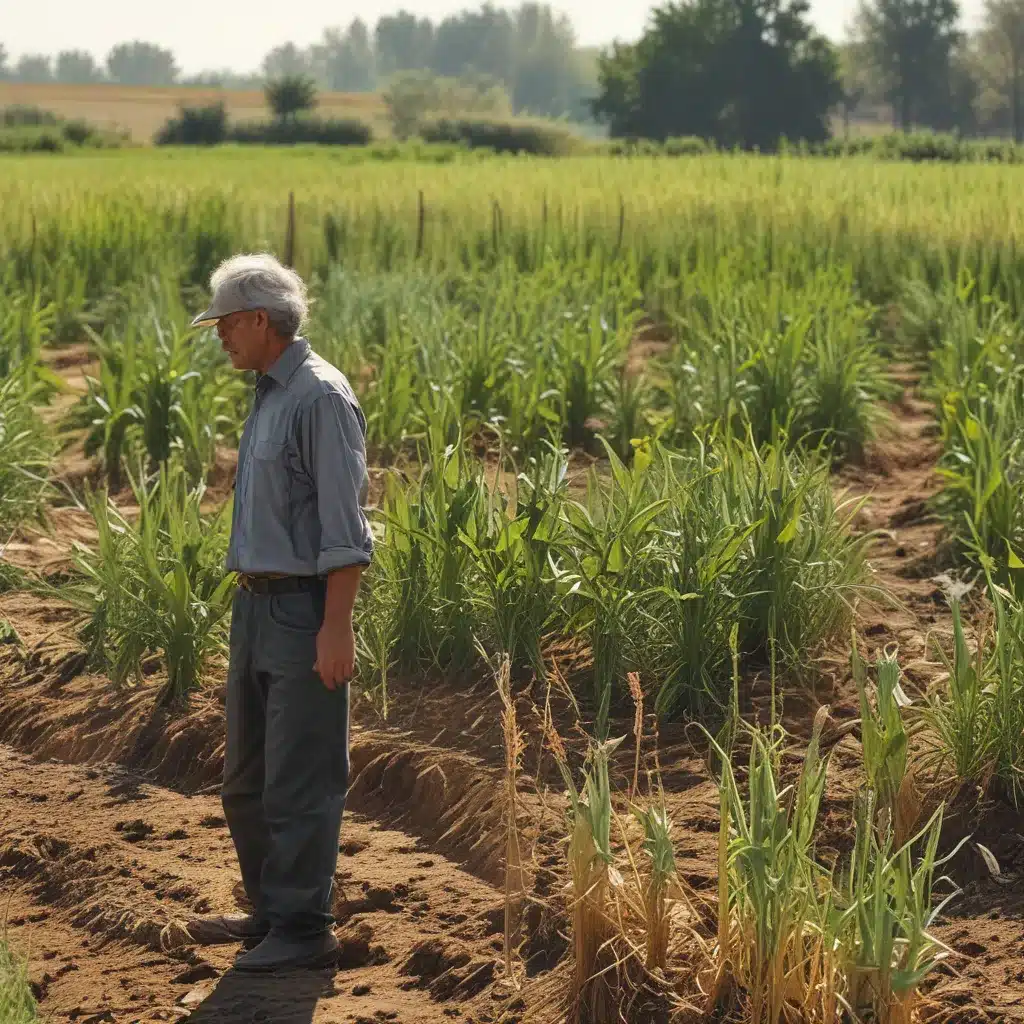
As I pull up to the Thornapple CSA farm, a familiar sense of wonder washes over me. The patchwork of lush, vibrant crops stretching out before me is a sight that never fails to fill me with a deep appreciation for the resilience of our land and the hard-working hands that nurture it.
I’m here today to explore how this community-supported agriculture (CSA) service is pioneering new ways to adapt to the challenges of climate change through diversified crop systems. And let me tell you, these folks are rewriting the playbook when it comes to sustainable farming.
The Changing Climate Landscape
It’s no secret that our planet is undergoing a dramatic transformation. As global temperatures rise and weather patterns become increasingly unpredictable, the impact on agricultural systems has been nothing short of staggering. Studies have shown that the frequency and severity of extreme weather events, coupled with shifts in precipitation and the emergence of new pest and disease threats, have posed formidable challenges for farmers around the world.
Just last year, the Thornapple CSA farm weathered a devastating hailstorm that wiped out a significant portion of their crops. Recounting the experience, the farm’s co-owner, Sarah, shakes her head ruefully. “It was heartbreaking to see all that hard work and careful planning literally go up in smoke. But we knew we had to adapt if we wanted to keep this operation going.”
Diversifying for Resilience
Sarah and her team didn’t waste any time. They immediately set out to diversify their crop systems, drawing inspiration from the principles of agroecology and the growing body of research on the benefits of crop diversification.
“The key,” Sarah explains, “is to create a more complex, interconnected ecosystem that can better withstand the shocks and stresses of a changing climate. Instead of relying on a handful of staple crops, we’ve expanded our repertoire to include a wide variety of fruits, vegetables, and even some specialty grains.”
As I tour the farm, I’m struck by the sheer diversity of the crops on display. From vibrant rows of leafy greens and vibrant root vegetables to towering stalks of heirloom corn and delicate, fragrant herbs, the Thornapple CSA has truly embraced the power of polycultures.
“We’ve found that this approach not only helps us mitigate the risks of individual crop failures,” Sarah continues, “but it also enhances the overall health and productivity of the land. By maintaining a diverse web of living organisms, we’re able to leverage the natural synergies and nutrient cycling processes that occur in healthy ecosystems.”
Soil as the Foundation
Of course, diversifying the crop systems is only one piece of the puzzle. The team at Thornapple CSA also understands the crucial role that soil health plays in building resilience to climate change.
“Healthy, well-nourished soil is the foundation of a thriving, resilient agricultural system,” Sarah explains. “It’s not just about what we grow on the surface; it’s about what’s happening beneath our feet, too.”
To that end, the farm has implemented a range of soil-building practices, including cover cropping, minimal tillage, and the strategic application of organic matter. By nurturing the soil’s complex web of microbial life, they’re able to enhance its water-holding capacity, nutrient cycling, and overall resilience to extreme weather events.
“It’s a bit like building a healthy immune system for our land,” Sarah says with a smile. “The more diverse and robust the soil ecosystem, the better equipped it is to bounce back from things like drought, flooding, or pest infestations.”
Embracing Diversity, Cultivating Resilience
As I continue my tour of the Thornapple CSA farm, I’m struck by the sense of purpose and passion that permeates every corner of the operation. It’s clear that these farmers aren’t just growing crops; they’re cultivating a vision of a more resilient, sustainable food system.
“At the end of the day, this isn’t just about our farm,” Sarah reflects. “It’s about the future of our community, our planet, and the generations that will come after us. By embracing the power of diversity – in our crops, in our soil, and in our approach – we’re not just adapting to climate change; we’re actively working to build a more resilient, regenerative future.”
And as I leave the farm, that vision of a more sustainable, climate-resilient future feels within reach. Thanks to the innovative work of pioneers like the Thornapple CSA team, the path forward is becoming clearer – one of diversification, soil stewardship, and a deep, abiding respect for the land that sustains us all.
So, if you’re looking to join the movement towards a more resilient, climate-adaptive food system, I encourage you to check out the Thornapple CSA and see how they’re leading the way. After all, when it comes to the future of our planet, there’s no time like the present to get your hands dirty and start growing the change we need to see.



